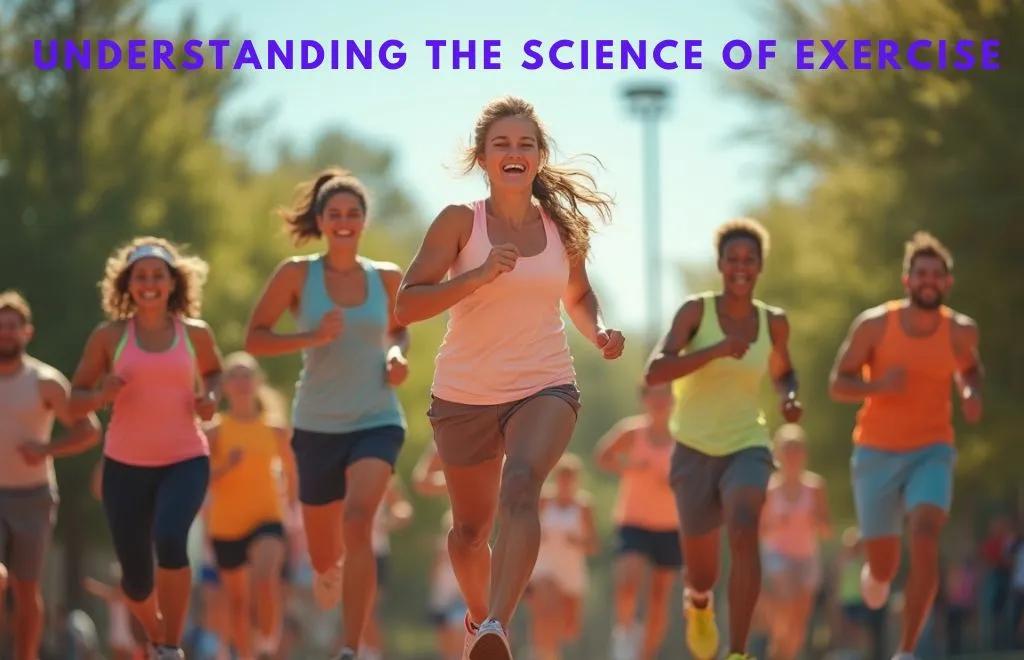1. Introduction: The Buzz of Endorphins

Exercise has long been hailed as one of the best ways to improve both physical and mental well-being. One of the primary reasons behind this is the release of endorphins, the body’s natural “feel-good” chemicals. For healthcare professionals, understanding the science behind exercise-induced endorphins is crucial, not only for advising patients but also for incorporating it into treatment plans.
1.1 What Are Endorphins?
Endorphins are neurotransmitters produced in the brain’s hypothalamus and pituitary gland. They function as the body’s natural painkillers, providing relief from discomfort while also generating feelings of pleasure. Their structure is similar to that of opiates, meaning they can provide a powerful sense of euphoria without the risk of addiction or negative side effects.
1.2 The History of Endorphin Discovery
The discovery of endorphins dates back to the 1970s when scientists were researching how opiates like morphine worked within the body. This led to the identification of endorphins as the brain’s own version of opiate-like chemicals. Their role in pain relief and pleasure soon became an area of intense study, particularly in relation to exercise.
2. Understanding the Science of Exercise

For healthcare professionals, a comprehensive understanding of how exercise impacts the body is essential. It’s not just about physical fitness; exercise triggers numerous biochemical processes, including the release of endorphins.
2.1 The Physiology of Exercise
Exercise causes stress to the body, pushing muscles, the cardiovascular system, and the nervous system to work harder. This leads to the release of various hormones, including adrenaline and cortisol, which prepare the body for “fight or flight.” Simultaneously, the brain releases endorphins to help cope with the physical strain, blocking pain receptors and generating a sense of well-being.
2.2 How Exercise Triggers Endorphin Release
Endorphin release primarily occurs during sustained physical activity, particularly aerobic exercises such as running, swimming, or cycling. As the body engages in strenuous activity, the brain releases endorphins to manage the physical stress and to encourage continued exertion. This phenomenon, often referred to as the “runner’s high,” is what gives people the euphoric feeling after intense workouts.
3. Benefits of Endorphins for Healthcare Professionals

Endorphins provide a wide range of benefits for both physical and mental health. For healthcare professionals, understanding these benefits allows for better patient outcomes, especially when exercise is incorporated into treatment plans.
3.1 Physical Health: Pain Management and Recovery
One of the most well-known benefits of endorphins is their ability to manage pain. For patients dealing with chronic conditions such as arthritis or recovering from surgery, exercise-induced endorphins can act as a natural analgesic. Healthcare professionals can leverage this by recommending controlled exercise routines to help patients manage pain without relying heavily on medications.
3.2 Mental Health: Mood Enhancement and Stress Relief
Endorphins are also critical in enhancing mood and reducing stress. Studies have shown that regular exercise can alleviate symptoms of anxiety and depression by promoting the release of these neurotransmitters. For healthcare professionals working in mental health, recommending exercise as part of a broader treatment plan can be an effective strategy to enhance overall mental well-being.
4. Real-Life Stories: Endorphins in Action

Case studies and interviews provide real-world evidence of how exercise and endorphin release have positively impacted patients and healthcare professionals alike.
4.1 Case Studies of Patients
One example is a patient with chronic pain who was able to reduce their dependency on prescription medications through a consistent exercise program that boosted endorphin production. After several months of aerobic training, the patient reported significant reductions in pain, improved mobility, and an overall better quality of life.
4.2 Interviews with Healthcare Pros
Healthcare professionals who incorporate exercise into their patient care regimens have seen firsthand the benefits of endorphin release. In an interview with Dr. Susan Taylor, a physical therapist, she mentioned, “Endorphins have transformed the way we approach pain management. Patients are more motivated to stick with exercise routines when they realize how much better they feel afterward.”
5. Practical Applications in Healthcare

Healthcare professionals can implement endorphin-boosting strategies in their practices to improve patient outcomes.
5.1 Incorporating Exercise in Treatment Plans
One of the most practical ways to utilize the benefits of endorphins is by incorporating regular exercise into treatment plans. This can range from light stretching for older adults to more intense aerobic workouts for younger, healthier patients. The key is to customize the exercise routine to the patient’s needs and abilities.
5.2 Developing Endorphin-Boosting Programs
Healthcare providers can also develop specific programs aimed at boosting endorphin levels, such as group fitness classes or individualized physical therapy regimens. By creating a structured environment for physical activity, patients can experience the benefits of endorphin release in a safe and supervised setting.
6. Challenges and Considerations

Despite the many benefits, there are some challenges and misconceptions related to exercise-induced endorphins.
6.1 Misinformation about Exercise and Endorphins
One common misconception is that more intense exercise always equals higher endorphin levels. In reality, moderate, sustained physical activity tends to be more effective at stimulating endorphin release than extremely vigorous exercise.
6.2 Barriers to Exercise for Patients
Many patients face barriers to exercise, such as physical limitations, lack of motivation, or pre-existing health conditions. Healthcare professionals need to be aware of these challenges and develop strategies to help patients overcome them.
7. Conclusion: The Future of Exercise in Healthcare

As research on exercise-induced endorphins continues, healthcare professionals are beginning to realize the profound potential these natural chemicals hold for improving patient outcomes.
7.1 Innovative Research and Trends
Ongoing research is exploring new ways to harness the power of endorphins, from wearable technology that tracks exercise-induced neurotransmitter release to virtual reality programs designed to enhance the workout experience.
7.2 Call to Action for Healthcare Professionals
Healthcare professionals are encouraged to stay informed about the latest trends in exercise science and to incorporate endorphin-boosting exercises into their treatment plans. By doing so, they can help patients achieve better physical and mental health outcomes naturally.
FAQs
1. What are endorphins? Endorphins are neurotransmitters that help reduce pain and increase pleasure, often released during physical activity.
2. How does exercise trigger endorphin release? Exercise stimulates the brain to produce endorphins, particularly during sustained, moderate-to-high-intensity aerobic activities.
3. Can exercise help manage chronic pain? Yes, regular exercise can boost endorphin levels, providing natural pain relief for conditions such as arthritis and post-surgery recovery.







